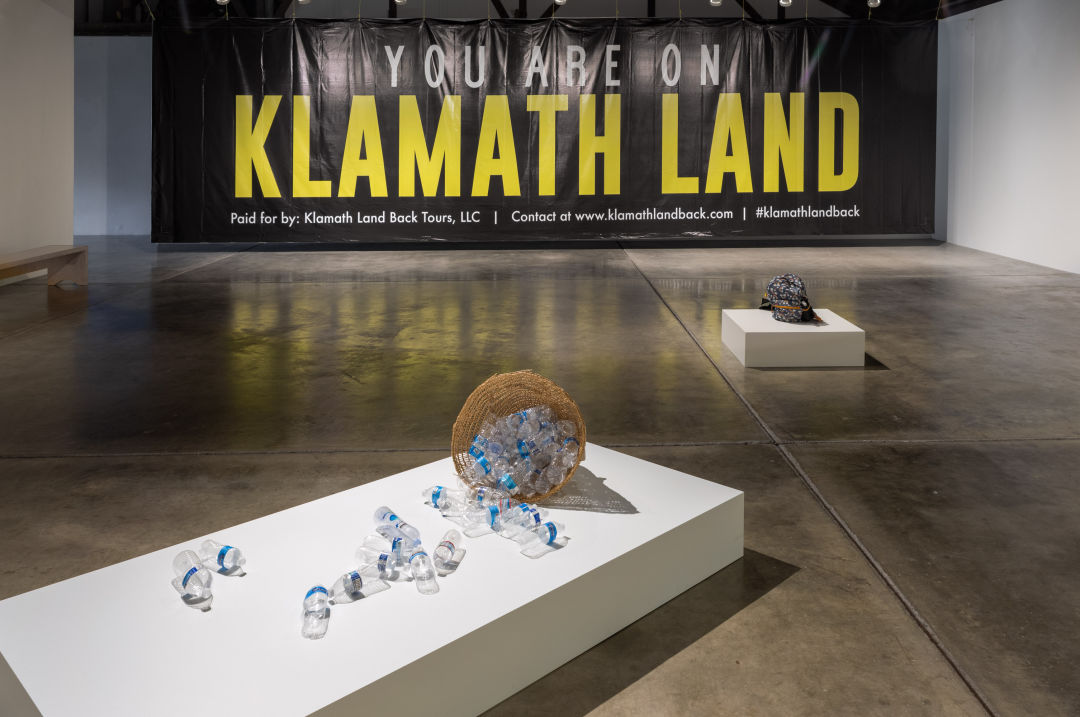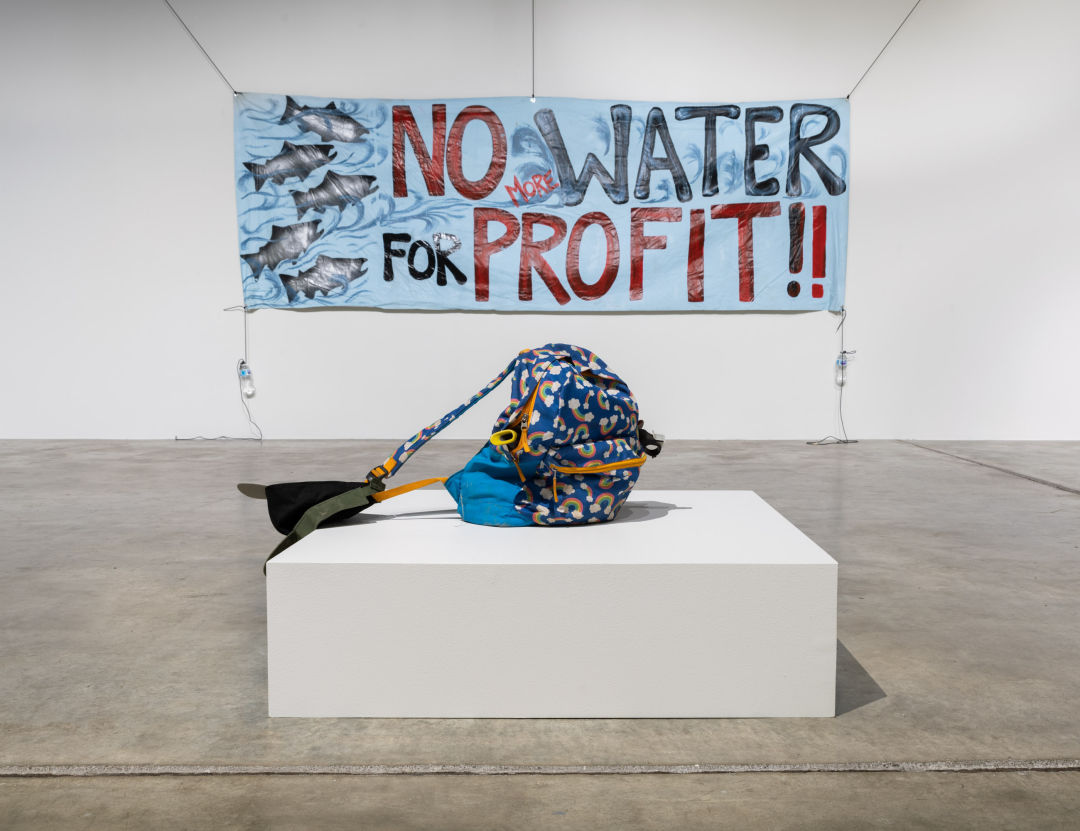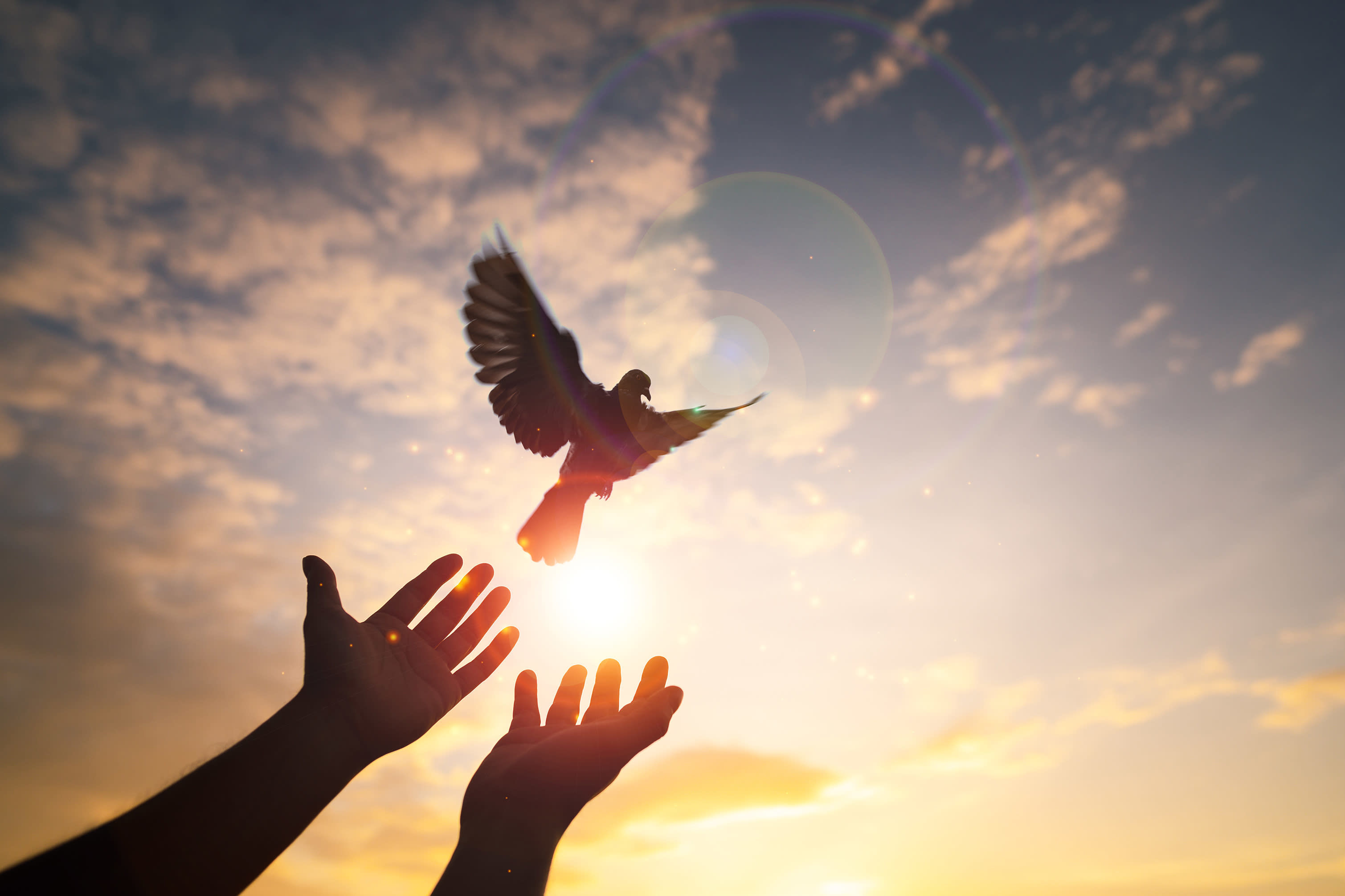Oregon Contemporary's Water: NFS Is an Act of Resistance

Water: NFS opened November 6 at Oregon Contemporary's new large-scale program, Site, featuring works from Natalie Ball and Annelia Hillman pue-leek-la'.
Image: Mario Gallucci
The Bootleg Fire burned from early July to late August. While Natalie Ball and Annelia Hillman pue-eek-la’ curated pieces for their latest exhibit, Water: NFS, over the course of that same summer, the fire scorched more than 400,000 acres of land just northeast of Upper Klamath Lake, and the immediacy of the issues that plague tribal communities in the area—drought, water wars, land rights—fell into stark focus. “My house wasn’t burning, but my home was burning,” Ball says.
Ball, an Indigenous textile and sculptural artist from the Modoc and Klamath Tribes, was born and raised in Portland. She says she’s always been connected to her home in Klamath Falls, but hadn’t lived there consistently until now. “It's like it's the Twilight Zone,” she says. “It feels a bit odd, weird, like mundane but violent. And I just want people to see that.” In Water: NFS, Ball and Hillman illustrate that everyday violence with 12 artifacts as part of Oregon Contemporary’s new large-scale program, Site, which has replaced the Portland Biennial this year.
One hesitates to call most of these 12 artifacts capital-A Art, because they're not quite that. They're not supposed to move you in the way a sculpture or a canvas might. They don't so much interpret as reveal, letting us see what it’s like to live under colonial threats. Through protest banners crafted in 2008 in an effort to remove the four dams on the Klamath River, to a children’s backpack equipped with a saw, bullets, lip gloss, bear mace, and Newports, what’s on display herefeels less like a museum piece to be adored through a glass box and more like something ready to be activated.
“Anything around Indigenous people is always kind of this archival thing, even the artwork we do. But we exist, we were still fighting here,” says Hillman, who is from the lower Klamath River. “This point that we could pick up [these items] and go, I think is part of this message here that we're trying to relay, that this is a constant struggle. It's not just one point in time.”
Initially, the exhibit was to be centered on Ball and her recent work, which at that point had been erecting a 10 x 40–foot billboard in Klamath Falls that reads, “You Are On Klamath Land.” (A replica of the same size encloses and reminds us in the exhibit.) At the annual salmon run in the Klamath River over the summer, which had been organized by Hillman, the two artists connected over an interest in helping tribes in the area unite over their shared water crises—the toxic water quality in the Klamath River from agricultural development, the PacifiCorp dams creating algae pools, the dwindling salmon and other food sources. But while there, they say that tribal council members were instead arguing amongst themselves. So Ball invited Hillman to share the exhibit space with her.

What to expect when you're expecting violence (2021) in the foreground and No more Water for Profit (2020) in the background
Image: Mario Gallucci
“I just feel like we need to show the public, we need to show our tribal counselors that the people are united,” Hillman says. “So no matter what [the tribal council is] arguing about, the lower Klamath and the upper Klamath need to be united as people for the betterment of the entire ecosystem and for our survival.”
With Water: NFS acting as Site’s first large-scale exhibit, curator and executive and artistic director Blake Shell recognized the importance not letting the work feel “didactic or historical.” It isn’t history, after all, it’s happening now and has been happening for decades. What was more important for Shell was the way the exhibit represented life for the artists and their communities and also brought others into the conversation.
“This is one of the biggest water rights issues ever, and it's right here,” Shell says. “And people are paying attention to it in small ways, and kind of anecdotally, and it doesn't feel as visceral or like an everyday reality for Portlanders, but it is. It just is something that people need to pay more attention to and realize.”
Those conversations aren’t always comfortable, and that’s the point. The artists hope to organize Klamath Land Back Tours in conjunction with the exhibit and bring folks to their homelands to see these issues firsthand. Until then, the exhibit speaks for itself.
“I hope to see more of these sorts of shows that can highlight our issues and our fight, but not in a pretentious way. In a really in a really honest way, that's not trying to be wrong or right or anything else,” Ball says.
Water: NFS
November 5–January 2, 2022, Friday through Sunday, 12–5 p.m. or by appointment




